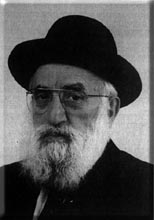Beit Midrash
- Sections
- Chemdat Yamim
- Parashat Hashavua
- Torah Portion and Tanach
- D'varim
- Nitzavim
The "wedding" between the Jewish Nation and Hashem symbolizes a situation of special closeness that we all strive to actualize. This could have happened when Moshe descended Sinai with the Tablets of the Covenant. Sadly, Moshe broke them because, instead of hearing the sound of rejoicing of "beloved friends," he and Yehoshua heard "the sound of the nation as it did evil" and "the sound of affliction" (Shemot 32:17-18). The midrash (Shemot Rabba, Ki Tisa 43) likens the episode to a friend of a bride and groom who was sent to finalize their betrothal, but when the bride was guilty of betrayal, protected her by destroying the evidence of the betrothal. Thus, Moshe, in a manner of speaking, called off the wedding … in the meantime.
In the framework of the negotiations to renew the relationship through repentance and forgiveness, the Torah states: "Hashem spoke to Moshe face-to-face as one speaks to his friend" (Shemot 33:11). "Face-to-face" is a state of special closeness, without which a wedding is not a wedding. Moshe was not satisfied with his own connection with Hashem and beseeched Hashem that His close relationship extend to the whole nation, as he said: "If your face does not go, do not take us from here" (ibid. 15).
Hashem accepted Moshe’s plea, and on Yom Kippur the second Tablets were given, and the "marriage" process was restarted. The end of the marriage was on Sukkot, a few days later, which served as a week of Sheva Berachot of sorts, culminating in Hoshana Rabba, which contains elements of Yom Kippur.
The section of Tehillim that we recite during this period ("L’Dovid Hashem Ori V’yishi") contains references to many of these motifs: "To You my heart said: ‘Seek my face;’ I will seek Your face, Hashem. Do not hide Your face from me" (Tehillim 27:8-9). David asked to be close to Hashem. Moshe got even closer, and was under the canopy, so to speak, when Hashem "covered him with His hand" (Shemot 33:22). Yet, he was only able to see "Hashem’s back" and not "His face" (ibid. 23). Along those lines, David asked to be "in His booth" and "His tent" (Tehillim 27:5).
Let us pray that in the upcoming weeks we will merit a favorable judgment on Rosh Hashana, experience His forgiveness on Yom Kippur, and be with the Divine Presence in the sukka, where we will seek Hashem’s face and hopefully receive it.

Present or Inheritance... or Both?
Various Rabbis | Tevet 5768

Parashat Hashavua: How to Ensure a Future of Torah
Rabbi Yossef Carmel | Cheshvan 5786

Parashat Hashavua: Neither Menashe Nor Yerachme’el
Rabbi Yossef Carmel | Tevet 5786




















